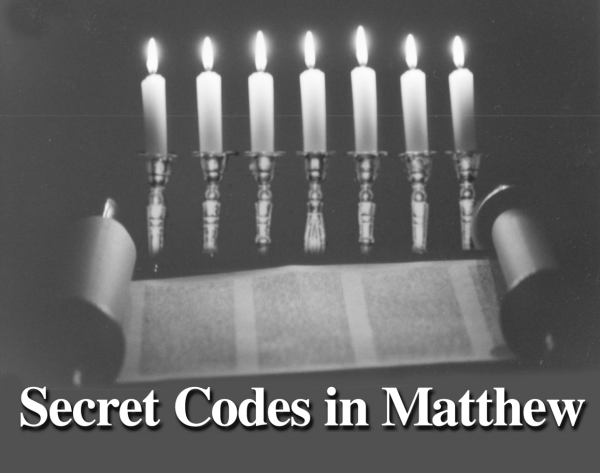The Secret Codes in Matthew: Examining Israel’s Messiah, Part 9: Matthew 13-14, by Kevin M. Williams

In this section of our study on Matthew 13, we take a look at the parables. This investigation will not likely be the same as many other examinations of Yeshua’s (Jesus’1) parables. From the outset, our purpose has been to demonstrate the “Jewishness” of this gospel and this section will be no different.
The use of parables is not restricted to the New Testament:
1) I will open my mouth in parables (Psalm 78:2).
2) “Son of man, set forth an allegory and tell the house of Israel a parable” (Ezekiel 17:2).
3) “Tell this rebellious house a parable” (Ezekiel 24:3).
The Hebrew equivalent of “parable” is the word mashal (see figure below), which is a “wise saying” or a sage poem. The root word, from which mashal is derived, is very similar, with the only notable difference being the vowel markers. This word appears in verses such as Genesis 3:16, regarding the “rule” of Adam and in later texts regarding the rule of Jacob’s son Joseph and King David. In the Hebrew mind, a mashal-parable is not simply a wise saying, but a wise saying that carries authority.
Within Orthodox Judaism, these mashalim or parables are commonplace throughout their literature. A novice reader can get lost trying to piece everything together. Determining exactly what the rabbis consider authoritative doctrine or instructive parable is not always clear. This lack of discernment may have been a catalyst to some of the synagogue book burnings conducted by Christian neighbors over the centuries.
Lightfoot comments, “No figure of Jewish rhetoric was more familiarly used than that of parables.”2 The Sanhedrin tract in the Talmud states that the revered Rabbi Meir taught the Torah a third of the time according to traditional interpretation, a third of the time using allegory, and a third of his time teaching with parables. In truth, one cannot help but look at the Tanakh (Old Testament) and realize that from the temple ritual, to books such as Solomon’s Song of Songs, to the very lessons of the great Exodus, the Jewish Scriptures are rich in parables.
It is this particular idea that leads Rabbi Hirsch to argue that Psalm 78 (noted above), which speaks of a parable, really tells an encapsulated history of Israel. “Rather than ‘parables’ and ‘riddles’ in the usual sense, the psalm reviews events of Jewish history. The events of Israel’s history are parables in they are object lessons for all time.”3
It would seem that Rabbi Paul would agree: “Now these things happened to them as an example, and they were written for our instruction, upon whom the ends of the ages have come” (1 Corinthians 10:11).
The Talmud, a multi-volume set of commentaries codified in the 6th Century, sets the standard for Jewish study. Yeshiva students will sit opposite one another and debate the Torah, often with very “heated” dialogue. The principle is that only through debate and the exercise of one’s mind can one truly learn, and truly find conviction in what one believes. The form of Christian study, sitting in a classroom and being spoon-fed information—essentially being told what to believe—is a foreign concept to the Orthodox Jewish approach to learning.
Consensus is not required. In fact, the Talmud is a list of various positions on any particular issue, commonly (but certainly not limited to) the opinions of Rabbi Shammai and Rabbi Hillel. The open dialogues, often very tense and in-depth, play on these varying opinions. The supervising rabbi at the yeshiva will wander the room and if he hears quite talk at a table, he asks the students, “are you agreeing or disagreeing?” If they say they are agreeing (hence the quiet), he tells them to move on to the next topic.
Category: Biblical Studies, Pneuma Review, Spring 2003


